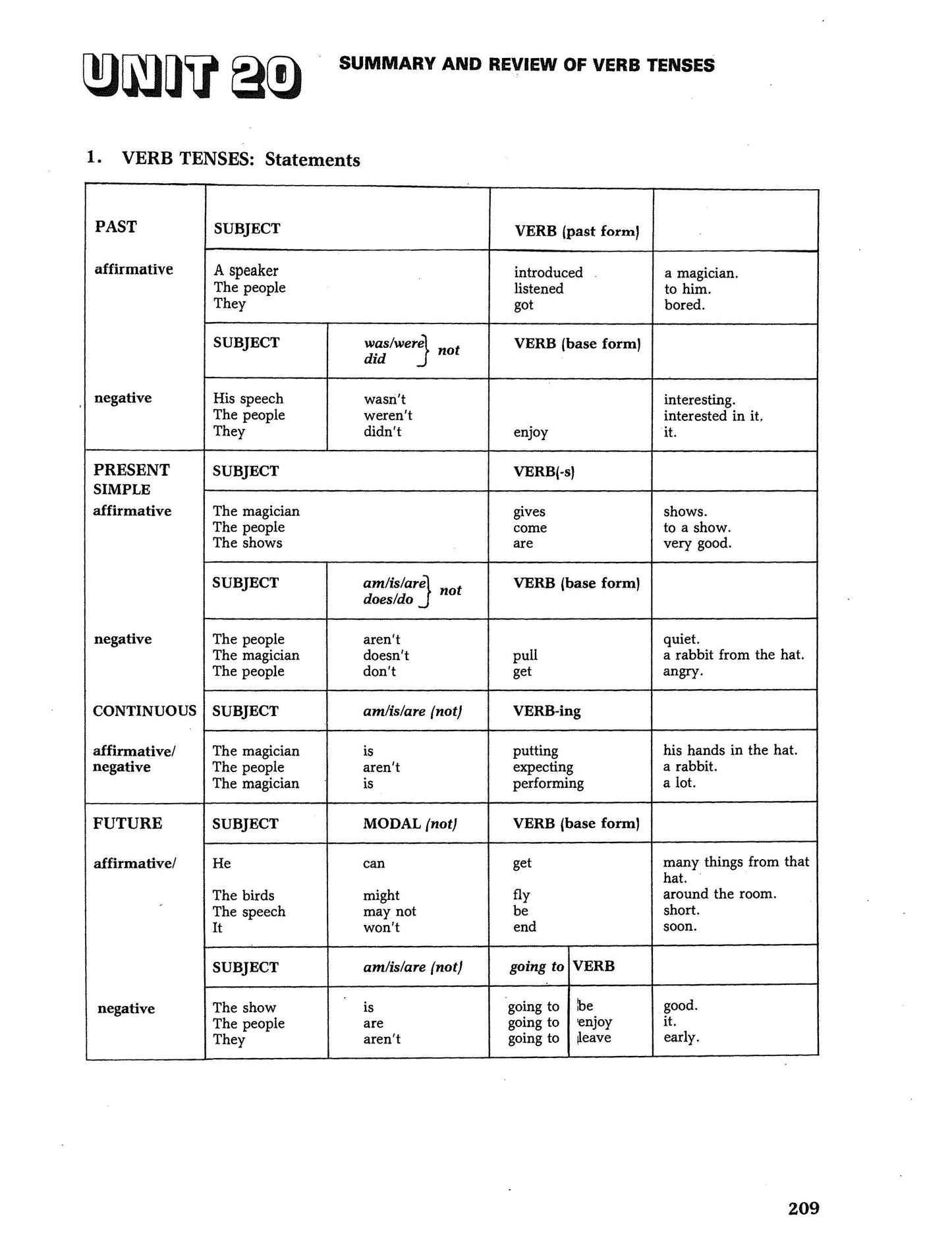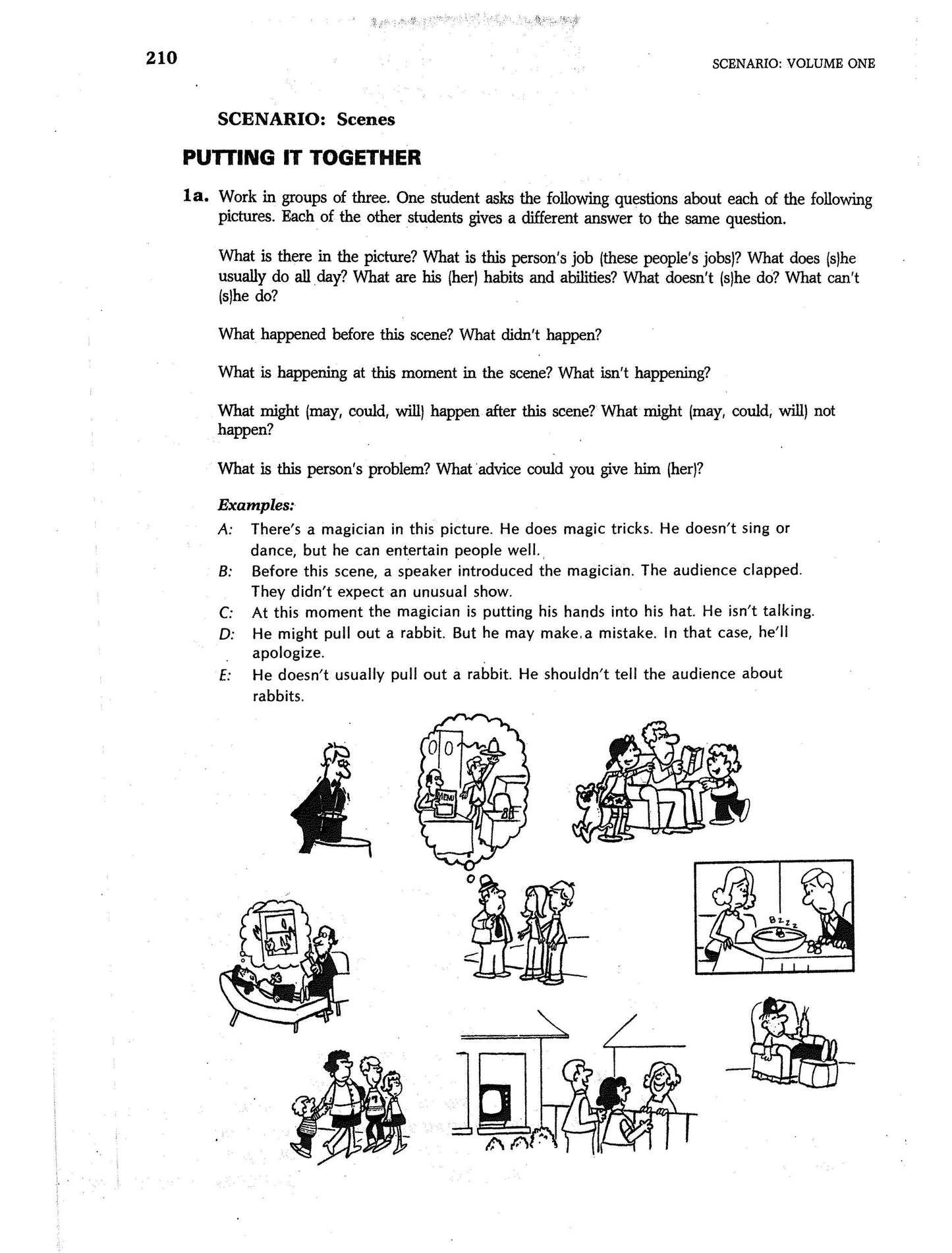1
/
of
2
Work/Life English
D-10.02 Summarize & Review Verb Tenses (Past, Present, Future) & Aspects (Simple, Progressive)
D-10.02 Summarize & Review Verb Tenses (Past, Present, Future) & Aspects (Simple, Progressive)
Regular price
$0.00 USD
Regular price
Sale price
$0.00 USD
Unit price
/
per
Unit 20 of the Original Scenario 1: English Grammar in Context: Summary & Review of Verb Tenses (“Scenes”), pages 209-213
5 page
Who It’s For: (Self) Teachers & Helpers at (High) Beginning to Intermediate Learning Levels Who Learn from Linear Charts, Drawings, & Big Steps to Take
Why It’s Useful: In the olden days, teachers and learners of English-as-a-Second Language used to cover not only “Verb Tenses” (when actions occurred) but also “Verb Aspects” (the flow of time: simple, completed, or continuous). To make instruction “comprehensive,” we would arrange examples of relevant sentence-structure elements into boxy black & white Charts—so that their order and forms could be compared. Here are a few mellowing pages that depict our results.
What You’ll Do:
[1] Start on page 209 with the boxes designated 1. “Verb Tenses: Statements.” After reading each sentence example (aloud with statement intonation), match its words with its identifying labels: Past / Present (Simple / Continuous ) / Future; Affirmative / Negative; Sentence Subject; Verb—Past Form / Base Form / -es or –ing; form of be or modal (not)—and the leftovers (adjectives, noun phrases, prepositional phrases, etc.) Verbalize what the alignment of the words in columns indicates or reminds you of—for instance, that “auxiliaries” like forms of be or do or a modal (with or without not), occupy a slot between the subject and the main (base or –ing) verb or going to phrase. In the “Putting It Together” section on the next page, follow instructions to apply given sentence patterns in answer to the several questions about the supplied drawings—“What happened? didn’t happen? is[n’t] happening? might [not] happen? is[n’t] going to happen? and so on. Go beyond the page to ask the same questions about printed or online illustrations (scenes) and what’s going on in real life.
[2] On page 211, consider time expressions for the past, present, and future. Then on page 212, adapt the above procedures to 3. “Verb Tenses: Questions.”
[3] The culminating activity of the Chapter, “Putting It Together,” is so “generic” that it can be used at various times in an English or content course of study. If participants are advanced language learners at the start, they can utilize it as a getting-acquainted, warm-up, “pre-test.” In the middle of a series of topics, substituting relevant vocabulary will adapt it to whatever is being covered. And at the end of a term, it can be an all-encompassing template to assess mastery of both / either grammar (Basic Verb Tenses & Aspects”) and / or subject matter.
Couldn't load pickup availability




